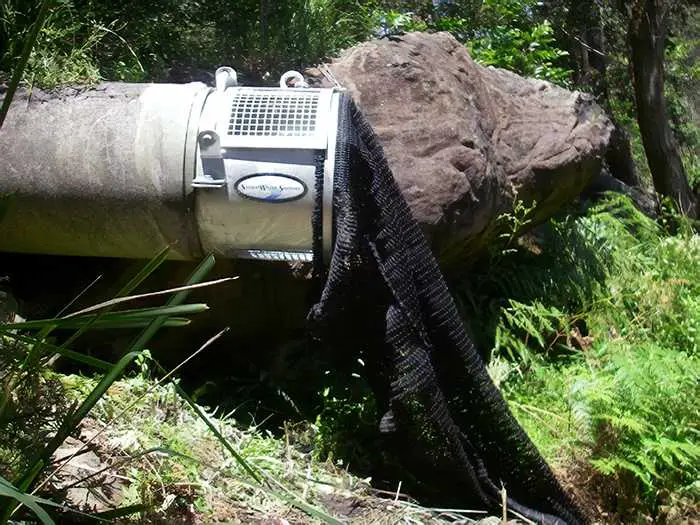Drainage Nets in Australia to Prevent Waste from Polluting Waterways

Waste management is a critical issue for developing cities because urbanization generates large amounts of waste. Efficient and cost-effective waste disposal methods are critical for preventing environmental degradation and promoting sustainable development.
The installation of nets at the outlets of drainage systems to collect waste material is one such method that has gained popularity. This method has been successfully implemented in the Australian city of Kwinana to manage wastewater discharges and reduce environmental pollution.

The Western Australian city of Kwinana faced significant challenges in managing wastewater discharges from drainage systems. The waste that flowed into the drainage pipes frequently clogged the systems and polluted the environment.
Traditional waste management methods, such as manual labor or expensive machinery, proved impractical and unsustainable. As a result, the city proposed a simple and cost-effective solution: installing nets at drainage system outlets.
Nets installed at drainage system outlets serve as traps, collecting waste material that flows out of the pipes. The traps are made of tough materials like steel or plastic and are built to withstand harsh weather and heavy waste loads. The traps are simple to set up and maintain, making them ideal for developing cities with limited resources.

The installation of nets at drainage system outlets has several advantages over traditional waste management methods. For starters, it is inexpensive because it requires little manual labor and no expensive machinery.
The traps are designed to be lifted by cranes and delivered to waste collection sites, eliminating the need for manual waste handling. Second, it is eco-friendly because it prevents waste from entering drainage systems and polluting the environment. The traps collect waste that can be easily disposed of at garbage collection sites, reducing the environmental impact.
The success of installing nets at drainage system outlets in Kwinana has led to its adoption in other cities in Australia and around the world.
Nets, for example, have been installed at the outlets of stormwater drains in Hyderabad, India, to prevent waste material from entering the Musi River. Similarly, nets have been installed at the outlets of stormwater drains in Los Angeles, USA, to prevent trash from entering the ocean.

The installation of nets at drainage system outlets is not without difficulties. One of the most difficult challenges is properly disposing of the waste material collected by the traps.
The waste material collected by the traps can be hazardous and must be handled and disposed of properly. As a result, it is critical to ensure that the waste material collected by the traps is properly disposed of and does not endanger the environment or human health.
Another challenge is keeping the traps in good working order. Although the traps are low-maintenance, they must be cleaned and inspected on a regular basis to ensure proper operation. Regular maintenance and cleaning can prevent clogging and ensure proper trap operation.
Finally, installing nets at drainage system outlets is a simple and cost-effective method of managing waste in developing cities. This method’s success in the Australian city of Kwinana has led to its adoption in other cities around the world.
However, addressing waste disposal and maintenance issues is critical to ensuring the traps’ proper operation and preventing environmental pollution. Installing nets at drainage system outlets is a step toward promoting sustainable development and environmental conservation.
RELATED: A South Korean professor invented an eco-friendly toilet that turns poop into power and pays you with digital currency in return. READ MORE…




